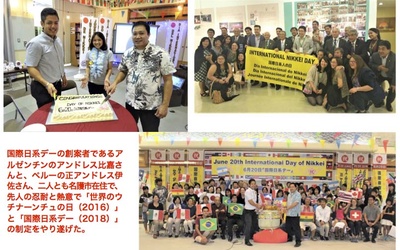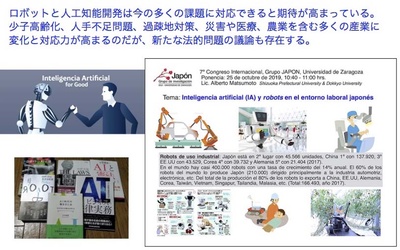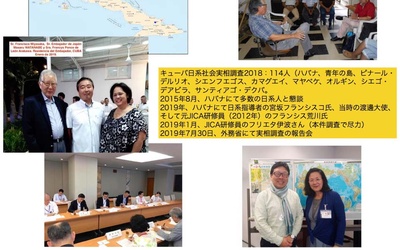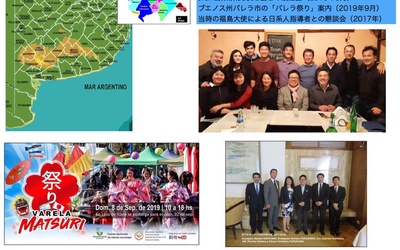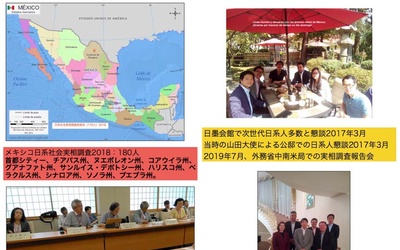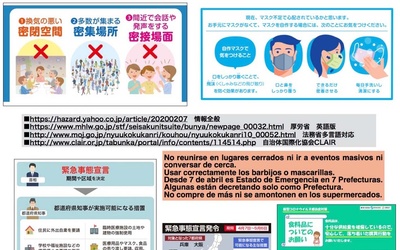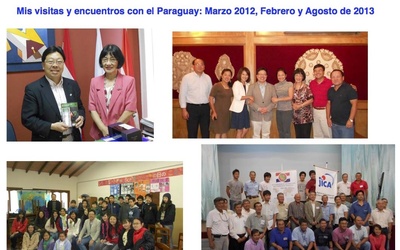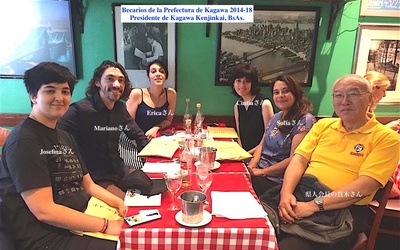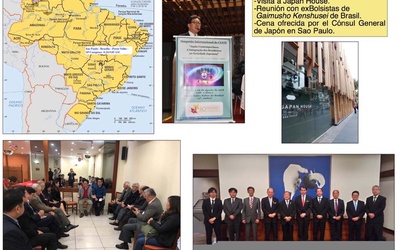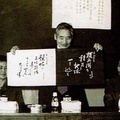
Alberto J. Matsumoto
@albertomatsumotoNisei Japanese-Argentine. In 1990, he came to Japan as a government-financed international student. He received a Master’s degree in Law from the Yokohama National University. In 1997, he established a translation company specialized in public relations and legal work. He was a court interpreter in district courts and family courts in Yokohama and Tokyo. He also works as a broadcast interpreter at NHK. He teaches the history of Japanese immigrants and the educational system in Japan to Nikkei trainees at JICA (Japan International Cooperation Agency). He also teaches Spanish at the University of Shizuoka and social economics and laws in Latin America at the Department of law at Dokkyo University. He gives lectures on multi-culturalism for foreign advisors. He has published books in Spanish on the themes of income tax and resident status. In Japanese, he has published “54 Chapters to Learn About Argentine” (Akashi Shoten), “Learn How to Speak Spanish in 30 Days” (Natsumesha) and others. http://www.ideamatsu.com
Updated June 2013
Stories from This Author
The Significance of "International Nikkei Day" ~ Discovering the Identity of the Next Generation
Oct. 14, 2020 • Alberto J. Matsumoto
In June 2018, June 20th was designated as International Nikkei Day at the 150th Anniversary of Japanese Immigration to Hawaii and the 59th Convention of Japanese People Abroad, both held in Honolulu.1 The idea for International Nikkei Day was proposed by Andres Higa, an Argentinian of Japanese descent living in Nago City, Okinawa Prefecture, 2 and Andres Tadashi Isa, a Peruvian of Japanese descent.3 Both men, whose ancestors are from Okinawa,4 felt a sense of crisis that their roots were …
Japan's foreign labor market: Future impact of robots and AI
Aug. 26, 2020 • Alberto J. Matsumoto
There are about 3 million foreigners living in Japan, of which 1.66 million are employed. This is a 13% increase from the previous year1 . The reason for this is the increase in technical intern trainees from Asian countries in recent years due to the conclusion of the Economic Partnership Agreement (EPA) 2 . 70% of Japan's foreign labor market is made up of workers from Asian countries, many of whom come to Japan alone as technical intern trainees. According …
Reflections on the 2018 Survey on the Realities of the Next Generation of Japanese Descendants in Latin America: Part 3 - Cuba
July 17, 2020 • Alberto J. Matsumoto
Part 2: Argentina >> The Ministry of Foreign Affairs' Latin America and Caribbean Affairs Bureau also conducted a survey of the Japanese community in Cuba from October to November 2018. The year 2018, when the survey was conducted, marked the 120th anniversary of Japanese immigration to Cuba, and various commemorative events were held in the capital, Havana, sponsored by the Japanese Embassy and other organizations. It may be surprising, but Japanese immigrants have a longer history than those who immigrated …
Reflections on the 2018 Latin American Next Generation Nikkei Survey: Part 2 - Argentina
July 3, 2020 • Alberto J. Matsumoto
Part 1: Mexico >> Most of the Japanese who immigrated to Argentina before the war were individuals, and even after the war, the majority of immigrants were based on government agreements, such as for trainees, and the number was quite limited. On the other hand, there were many immigrants from neighboring countries such as Bolivia and Paraguay, and I think that the current population, including fourth-generation Japanese, is around 50,000. Until a dozen years ago, the conventional wisdom was that …
Reflections on the 2018 Latin American Next Generation Nikkei Survey: Part 1: Mexico
June 19, 2020 • Alberto J. Matsumoto
Introduction Over the past decade or so, the number of young Japanese people coming to Japan from South America for study or training has been increasing. Perhaps they could be called the millennial generation, they are curious, but as a result, while they are interested in a variety of things, they tend not to get too involved and instead prioritize "the fun of the moment" and "a sense of adventure." Even if they have goals, this generation is quite flexible …
Confusion and hope among Japanese Latinos in Japan regarding the COVID-19 pandemic
April 20, 2020 • Alberto J. Matsumoto
As of April 16, 2020, the novel coronavirus has spread and raged around the world, and the situation is changing day by day. On February 3 of this year, a large cruise ship docked in Yokohama1 . This was the beginning of Japan's fight against an invisible and yet not fully known "enemy." In order to prevent the spread of infection, schools were closed and events were requested to be refrained from in March. In March, entry and exit restrictions …
2021 Paraguay COPANI ~ My wish - Part 2
April 15, 2020 • Alberto J. Matsumoto
Read Part 1 >> In recent years, many Nikkei leaders have expressed fatigue at the COPANI conference. Many point out the crammed lectures and the endless parade of subcommittees, and would like to see more time and distinctive presentations, not just content. Sometimes it may be necessary to take up relevant cases from other countries on important issues facing the host country, or to have the opportunity to hear the opinions of experts. The keynote speaker does not have to …
2021 Paraguay COPANI ~ My wish - Part 1
April 14, 2020 • Alberto J. Matsumoto
The first COPANI (Convención Panamericana Nikkei) was held in Mexico City in 1981, and the 20th was held in San Francisco last September. The contribution of one of the founders, Carlos Kasuga, a Mexican second generation Japanese businessman, cannot be ignored in the background of COPANI's continued existence.1 This was the fourth time COPANI was held in North America, following the Los Angeles convention in 1989, the New York convention in 2001, and the Vancouver convention in 2005, and the …
The role of the second generation and beyond in the "Kenjinkai" and building bridges into the future
April 3, 2020 • Alberto J. Matsumoto
In recent years, the form and role of "kenjinkai," which was a tool for communication between Japanese immigrants in South America and their prefectures of origin, has changed. Before the war, it was a place where people from the same hometown gathered to exchange limited information, and was an institution that acted as a bridge to contact families left behind. After the war, the number of kenjinkai operated with subsidies from each prefecture increased, and especially from the 1970s to …
"Collaboradores Conference 2018" and visit to local Japanese communities in Brazil
March 16, 2020 • Alberto J. Matsumoto
At the end of August 2018, I had the opportunity to attend an international symposium called "Conference of Collaborators: Contemporary Japan - Integration of Brazilians in Japan into Japanese Society" held in São Paulo, Brazil, at the invitation of the Ministry of Health, Labor and Welfare. I also took the opportunity to visit local Japanese communities. The "Collaboradores Conference" is a meeting organized annually by CIATE 1 (Center for Information and Assistance for Brazilian Overseas Workers), which was established by …

